VIDEO DEMO
See it in action
Want to learn more or see this dashboard in action? Check out our video demo, where we walk through all major aspects of the case study and dashboard.
Watch the video demo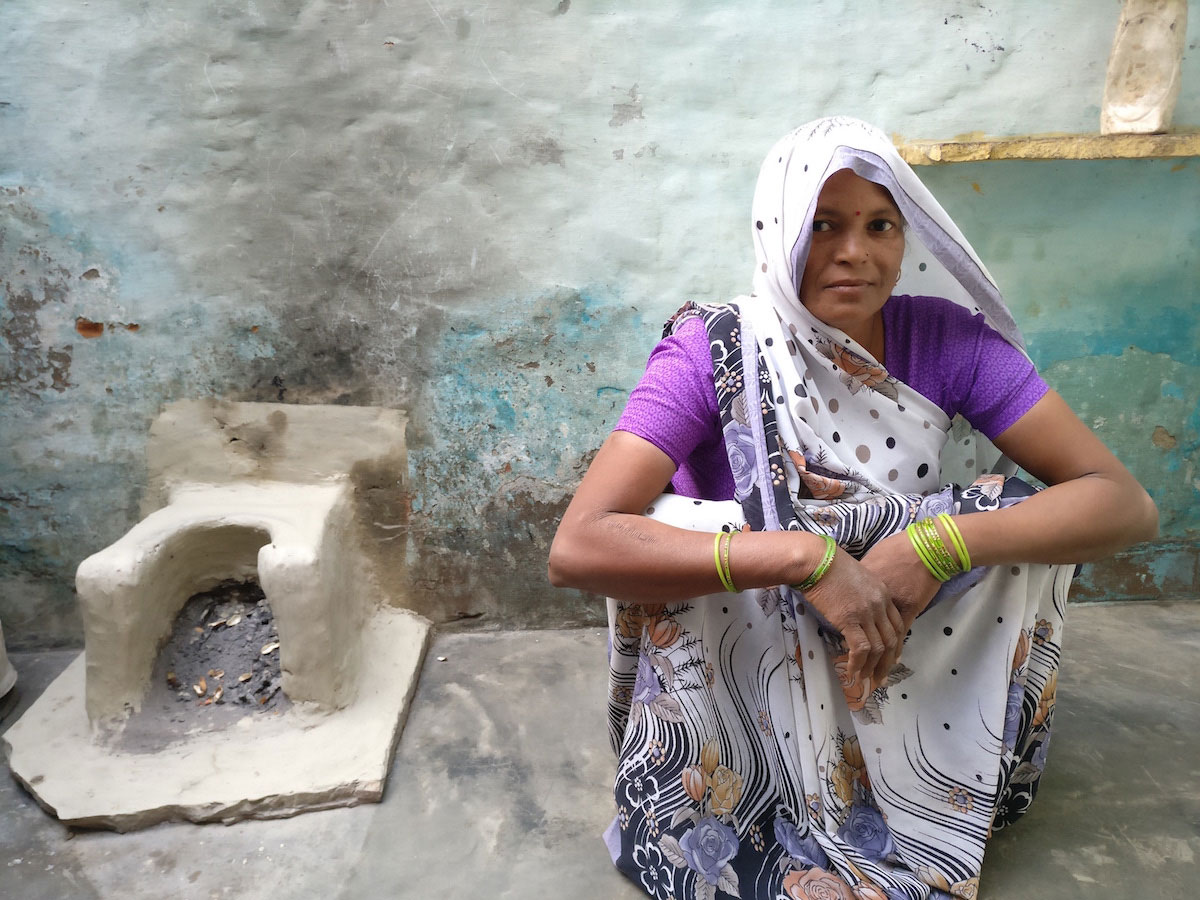
Case study
As part of the Ujjwala Yojana scheme, the Ministry of Petroleum and Natural Gas wanted to open 10,000 new LPG distribution centers. They partnered with SocialCops to find locations with the greatest impact and reach people who needed clean cooking fuel the most.

Ministry of Petroleum and Natural Gas

Bharat Gas

Indian Oil
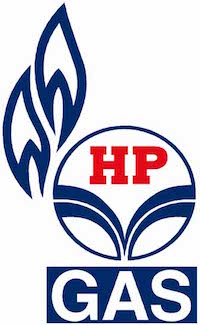
Hindustan Petroleum
Government
Business
India
In May 2016, the Ministry of Petroleum and Natural Gas launched Pradhan Mantri Ujjwala Yojana, its flagship scheme to ensure access to clean cooking fuel. The scheme aims to provide free LPG (liquified petroleum gas) connections to 50 million women under the poverty line by 2019.
The Ministry of Petroleum and Natural Gas partnered with SocialCops to use data intelligence to carry out the scheme effectively. We focused on three aspects of the scheme; first, we tackled the problem of where to open new LPG centers.
Learn moreUjjwala Yojana is guided by a strong commitment to bring about a qualitative change in the lives of poor women.

Prime Minister
Government of IndiaWomen usually cook on a chulha (clay cook stove) because the nearest LPG center is just too far away. To solve this, the Ministry of Petroleum and Natural Gas partnered with India's 3 oil marketing companies to open 10,000 new LPG distribution centers.
The Ministry's goal was to reach the people who need connections most, rather than opening centers in India's wealthy or urban areas. How could they quickly figure out which locations would reach the most people in need and have the greatest impact?
The Ministry of Petroleum and Natural Gas partnered with SocialCops to plan for 10,000 new LPG distribution centers with data intelligence. We used a diverse set of data to figure out where to open up each new LPG center so it would have the greatest impact on improving access to clean cooking fuel.

Our data collection tool was used to collect the latitude and longitude of each of India's 17,000 LPG centers in just 1 month.

6.4 million data points about LPG penetration, income, population growth, and more were sourced from our data repository.

Our data transformation engine was essential for making millions of data points from diverse data systems talk to one another.

The transformed data was visualized in an interactive dashboard with state, district, and village-level comparisons, geoclustering, and the 10 best locations for an LPG center in every district.
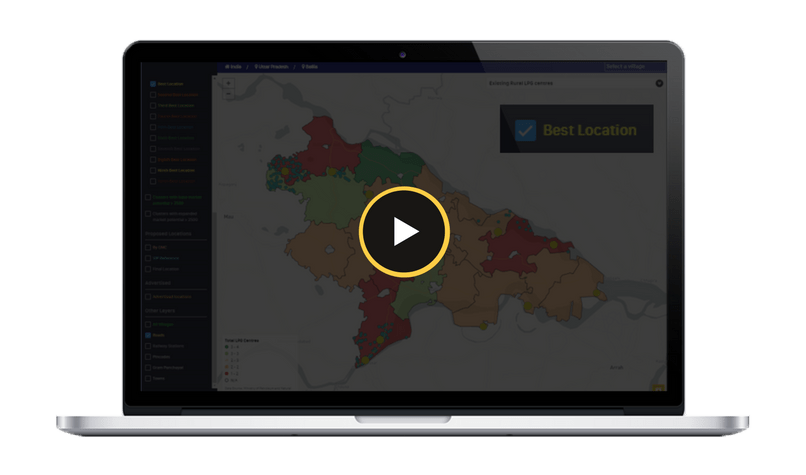
VIDEO DEMO
Want to learn more or see this dashboard in action? Check out our video demo, where we walk through all major aspects of the case study and dashboard.
Watch the video demoMerging sales data
We merged sales data for each of India's 17,000 existing distributor centers.
Sourcing internal data
We layered external data with data from our internal repository of 600 external data sources.
Collecting geo-locations
17,000 distributors downloaded our app to submit the geocoordinates of their LPG centers.
Data merging
Since all the data came from different systems, it had to be processed, matched, and geocoded.
Data analysis
Our data scientists created an algorithm to cluster villages and rank potential LPG locations.
Data visualization
Officials used our interactive dashboard to find the best location for every new LPG center.
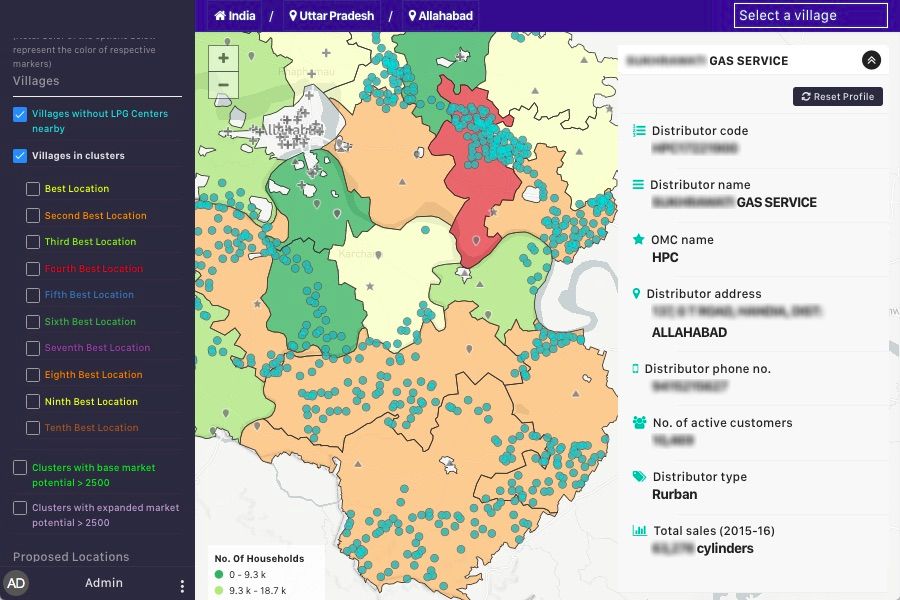
The first step in getting all the data we needed was to understand what existed currently. We pulled disparate data about sales, number of consumers and supply, and more from the scattered internal data systems of India's 3 oil companies. We merged and geocoded all this data with Transform, our data cleaning engine.
More about Tranform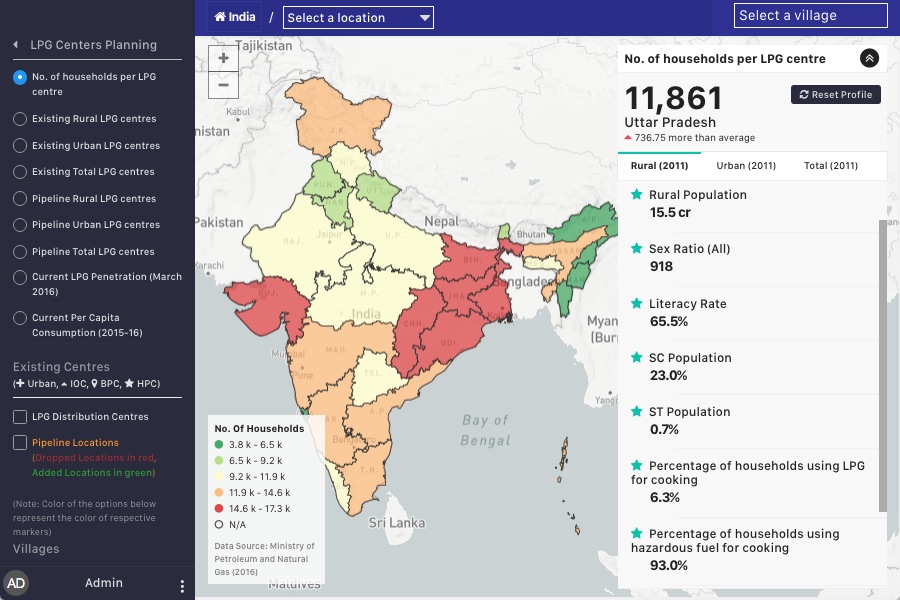
Since sales data only cares about profitability, we knew we had to add external data so we could place centers in the places with the greatest impact. So we pulled data from Access, our data repository, to map population, affluence, infrastructure, LPG penetration, and a host of other data points.
More about Access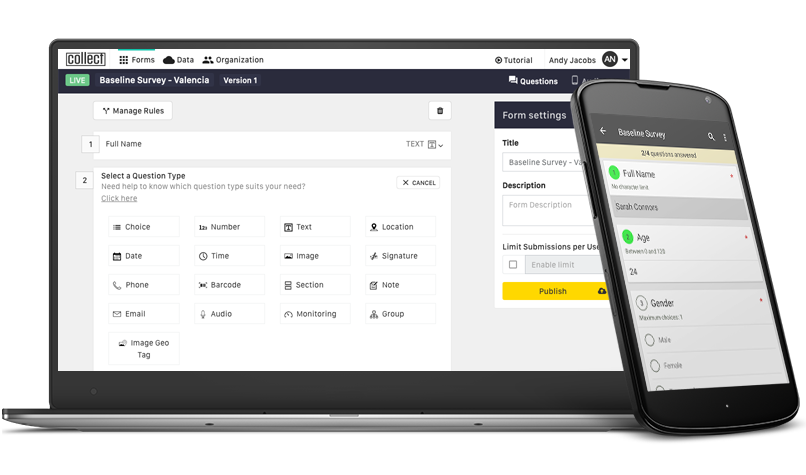
When we thought we had all the data we needed, we realized we didn’t actually know the location of the existing LPG centers. Within a month, 17,000 distributors downloaded our app to submit their location coordinates from the remotest corners of the country.
More about CollectOur platform mapped the 17,000 existing distribution centers as the base for our analysis.
Next, we identified villages that were more than 10 km from the nearest LPG center. These were the villages we needed to target.
We then used market-level data to identify which of the underserved villages had enough market potential to support a new LPG center.
With all this data, we could finally locate the best location for a new LPG center in every district, based on where it will have the greatest impact.